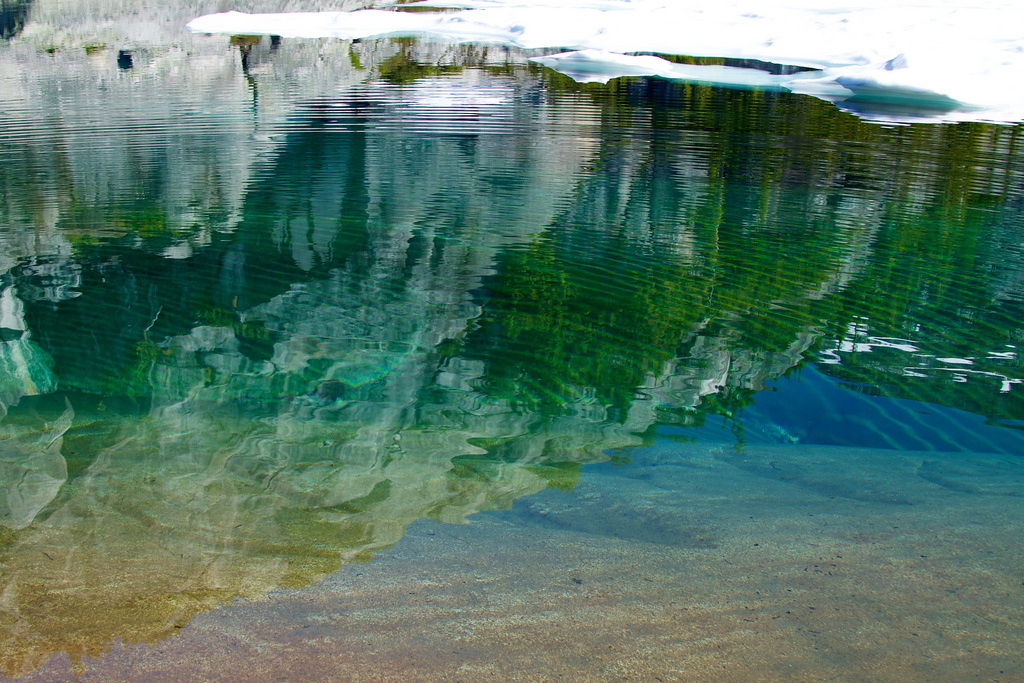 Plant Biology
Plant Biology
Probing the evolution of photosynthetic life on the early Earth
Plants are able to gather energy from the sun thanks to an evolutionary partnership between photosynthetic bacteria and early living organisms. It is commonly assumed that this took place more than a billion years ago within the ancient ocean, but molecular biology sheds new light on this key event in early Earth evolution.

In a famous cartoon, a fish morphs slowly into a human as it forsakes water for dry land. With sly humor, this doodle actually captures a pervasive narrative of evolutionary history: the oceans are life's cradle, with life gaining the continents only later. Seemingly, the geologic record supports this perception, as the oldest records of bacteria, eukaryotes in general and animals in particular all occur in sedimentary rocks deposited beneath the sea. At least in part, however, the observed pattern reflects a major bias of sedimentary rocks. Marine environments are commonly places where sediments accumulate, while non-marine environments more commonly experience net erosion, especially on long time scales.
Given that non-marine rocks are uncommon and may be difficult to interpret in ancient terrains, we turned to molecular biology to probe the environmental setting of one of evolution's most profound events -- the establishment of photosynthesis in eukaryotic organisms, giving rise to algae and eventually land plants. We focussed on phylogeny, the genealogical relationships among organisms, based, in this case, on the comparison of genes and whole genomes from different modern species. Our analysis included red algae, green algae, and a minor algal group called the glaucocystophytes, as well as a wide assortment of cyanobacteria, a group of bacteria characterized by what textbooks insist on calling green plant photosynthesis.
Why these organisms? Red, green and glaucocystophyte algae are the direct descendants of the first photosynthetic eukaryote. In contrast, cyanobacteria are the direct ancestors of chloroplasts, the compartments in eukaryotic cells where photosynthesis takes place. Photosynthesis in eukaryotes reflects an event, more than one billion years ago, when a protozoan host engulfed a cyanobacterial cell and retained it as a symbiont rather than consuming it. The cyanobacterium leaked sugars it produced, providing its host with food, while the host ensured a stable environment for the bacterium, along with nutrients needed for growth. In time, the relationship became obligate, with many cyanobacterial genes migrating to the host's nucleus. Thus, chloroplasts in the trees, herbs and seaweeds of our daily existence represent photosynthetic bacteria long ago reduced to metabolic slavery.
Under what conditions did this event occur? In terms of habitat, green algae split in two: marine and non-marine species. On the other hand, glaucocystophyte algae are non-marine, as are species on the lowermost branches of the red algal tree. Moreover, the cyanobacteria most closely related to chloroplasts live in non-marine environments. Our statistical analysis indicates with high probability that the epic event that gave rise to chloroplasts took place not in the oceans, as commonly assumed, but in a low salinity setting, perhaps a lake or stream.
We still have much to learn about the diversity and evolutionary relationships of photosynthetic organisms, but if the current analysis holds, we must rethink the great radiations of red and green algae in the marine realm, well documented by fossils. In the new view, these radiations represent invasions from non-marine habitats. Interestingly, fossils, molecular clocks and recently published geochemical data agree that algae gained ecological importance as plankton, living in the water column of shallow oceans, about 700 million years ago. Independent geochemical data suggest that this was a time of major environmental transformation, with nutrient availability for primary producers increasing markedly on continental shelves. Ecological theory and observation suggest that such an influx of nutrients would enable algal plankton to compete successfully with cyanobacteria.
By refining our sense of when and where eukaryotes gained the capacity for photosynthesis, we contributed to an expanding view of Earth history in which life and environment are joined in a dance through time, each influencing the other for nearly four billion years.
Original Article:
P. Sánchez-Baracaldo, J. A. Raven, D. Pisani, A. H. Knoll, Early photosynthetic eukaryotes inhabited low-salinity habitats. Proceedings of the National Academy of Sciences, (2017)Next read: How did wild cats turn into our beloved domestic animals? by Magdalena Krajcarz , Maciej Krajcarz
Edited by:
Massimo Caine , Founder and Director
We thought you might like
How humans gave acne to the grapevine
Feb 28, 2015 in Evolution & Behaviour | 3.5 min read by Carlos J. Rivera-RiveraThe lingering effects of parental care and its role in evolutionary change
Jan 27, 2016 in Evolution & Behaviour | 4 min read by Rebecca KilnerLiving without mitochondria: the downfall of one textbook truth
Oct 3, 2016 in Evolution & Behaviour | 3.5 min read by Lukáš NovákFancy footwork: Darwin’s pigeons and the evolution of foot feathers
Jan 20, 2017 in Evolution & Behaviour | 3.5 min read by Eric DomyanMore from Plant Biology
Unravelling the Secrets of Pine Roots: A Tale of Nutrition and Adaptation
Oct 20, 2023 in Plant Biology | 3.5 min read by Rafael Cañas , Francisco OrtigosaStressful memories help plants resist caterpillars
Oct 2, 2023 in Plant Biology | 3.5 min read by Samuel Wilkinson , Adam Hannan Parker , Jurriaan TonDecoding the genome of a jackfruit that grows all year round
Sep 6, 2023 in Plant Biology | 3.5 min read by Tofazzal IslamLife after logging: the tale of recovering tropical forests
Aug 21, 2023 in Plant Biology | 3.5 min read by Maria Mills , Terhi RiuttaEditor's picks
Trending now
Popular topics


